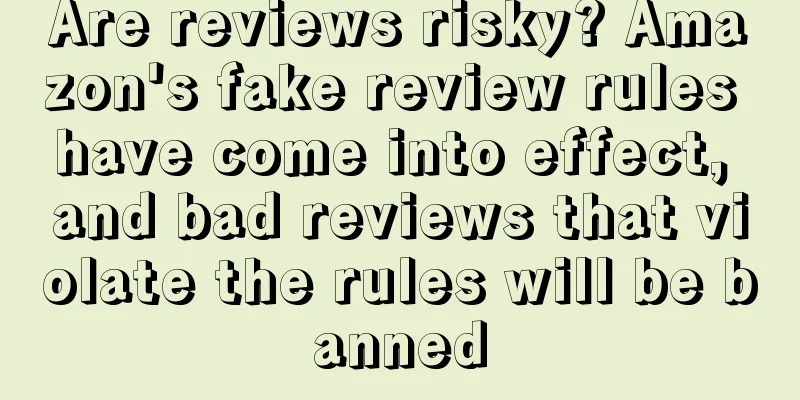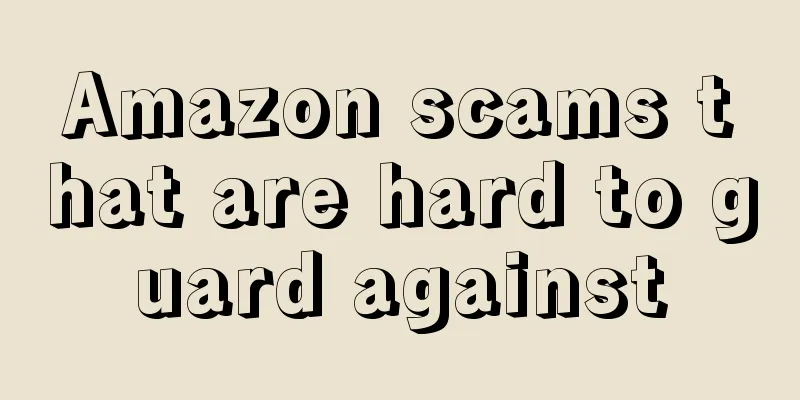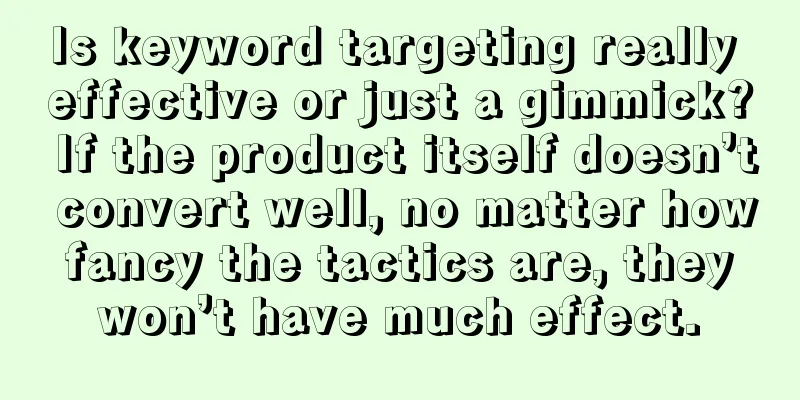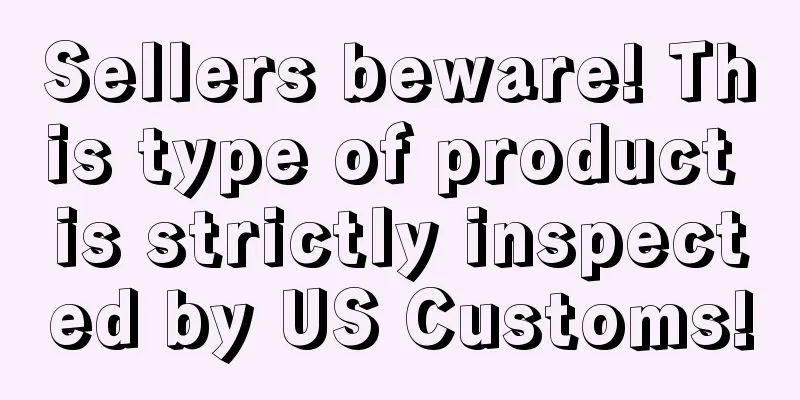Are reviews risky? Amazon's fake review rules have come into effect, and bad reviews that violate the rules will be banned

|
The information provided in this article is for reference only and does not constitute investment advice. |
<<: There are new changes in Amazon A10 algorithm!
>>: Amazon starts pushing low-price entry, is it lower than Pinxixi?
Recommend
New trends in cross-border platform investment in 2025: US market becomes the focus
As 2024 draws to a close, many cross-border e-com...
How did a competitor achieve annual sales of 12 million USD with zero advertising? What was the operation method? Here is what I learned...
COCONINI My C position Overview of Competing Sto...
Why did Amazon product sales suddenly drop?
text 1. The internal causes are as follows: 1. If...
ChatGPT has evolved! A big seller has invested nearly 2 million!
It was observed that this morning, a topic #ChatGP...
What is the Community Mentor Program? Community Mentor Program Review
eBay Community Mentor Program The Community Mentor...
USPS suspends parcel delivery to Canada, and recommends sellers to use other logistics methods
It is learned that recently, the United States Pos...
What is Amazon Storefronts? Amazon Storefronts Review
Amazon Storefronts is an exclusive landing page fo...
US holiday e-commerce sales will achieve double-digit growth! These categories have strong demand
It is learned that according to eMarketer's fo...
Regarding Amazon SP advertising, there are still a lot of practical tips here
Amazon ads change every day. An ad that brought y...
What is Barcodestalk? Barcodestalk Review
BarCODestalk is headquartered in the United States...
Zuckerberg is learning from Musk? Will WhatsApp charge a subscription fee?
It is learned that due to Zuckerberg's ambitio...
What is Informed.co? Informed.co Review
Informed.co , formerly Appeagle, is a repricing to...
Amazon Exclusive Program, Transparency Program, Zero Tolerance Program, Refurbished Program, Vine Program... a big science gathering!!!
Image source: Article 55 Occasionally, industry fr...
Facebook launches "Featured" badge for sellers! Compete with eBay and Etsy!
It is learned that Facebook recently announced tha...
$4.7 billion in severance pay! Amazon, Meta and other companies spend a fortune on layoffs!
It is learned that according to foreign media repo...









